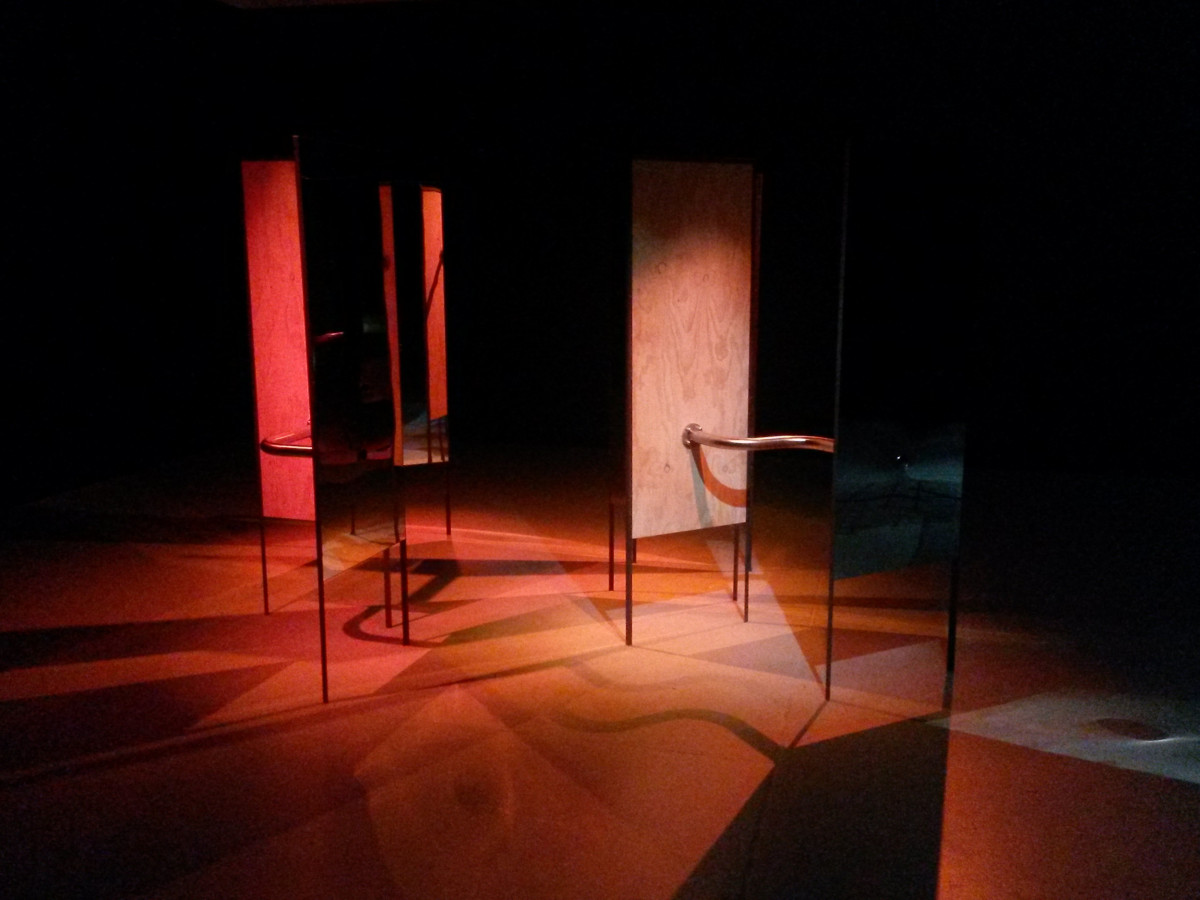 Matt Huppatz, Glory Box Variations, 2015
Matt Huppatz, Glory Box Variations, 2015The public toilet next to the police station, across from the library and adjacent to the council chambers was where I first faced glory. Circa nineteen-eighty-nine. Accidental civic encounter where teen-me stood suspended sans language to comprehend an aperture drilled into the cubicle partition being rimmed by a masturbating stranger’s nicotine fingers. Elsewhere, at the same point in time, another item was consigned to my sister’s glory box of whitegoods that, by the time she married, had become obsolete, obscene.
Edging toward minimalism, past elegant sterility, Matt Huppatz’s visual language belies an intense tide of meaning that relates to queer space and ritual. His sculptural and installation work has been concerned with sex venues and nightclubs, liminal sites where sensations act on bodies rather than the intellect; pre-linguistic theatres for affective codification.
Dysfunctional and reflective, Huppatz’s work often parades its transparency but mystifies surface and depth. While identity roams restless, like damp rising above the nocturnal fray, his materials are sealed tight, commotion embalmed. Duchampian assemblage revises the queer body like an art-historical ghost whose erotic residue is rewritable, always up for grabs. Modernism’s grand narratives become a sticky labyrinth.
 Matt Huppatz, Sometimes (I Want to Leave My Body), 2012
Matt Huppatz, Sometimes (I Want to Leave My Body), 2012“Sensation is that which is transmitted from the force of an event to the nervous system of a living being and from the actions of this being back onto the world itself,” writes Elizabeth Grosz in Chaos, Territory, Art (2008). The frames that artists erect to make sense of the chaos we inhabit, a concept alluded to by Grosz in her reading of landscape, are also evident in Huppatz’s practice. Drilled deep within the psychic ground that Matt traverses are cavities for connecting dots and collapsing matter, bottomless and tumbling.
Matt’s early photo series Sometimes (I Want to Leave My Body) (2012) depicts colour fields of disco light sanitising a stage where the sweat of assembly manifests. A pit of primal décor and much bigger with the lights out. With eyes shut, breath held, the party reeks of a drug-fuelled human abattoir; murder on the dancefloor. Resist resolution all you like; the inevitable sunrise cannibalises the nightclub for the diurnal mist of domesticity closing in. Everyday life is a cleaning ritual for an unfinished prototype. The first time I saw these photos I read them as AIDS allegory. Now all I see is a nightclub emptied by COVID-19 and replaced by Zoom.
Art doesn’t work until it works to obviate distance between object and viewer, arousing sensation. Artists can’t work until these sensations are felt, smelt, dealt. In this way, Matt Huppatz manoeuvres a history of images and ideas with gentle coercion into glory boxes of his own making. Caterpillar traps for lips and fingers, the glory hole at the butterfly ball, queer passages for iridescence and transformation.
Catalogue essay for If the Future is to be Worth Anything: 2020 South Australian Artist Survey at ACE Open, Adelaide, curated by Patrice Sharkey and Rayleen Forester, 12 September - 12 December 2020.
Published by ACE Open in 2020.